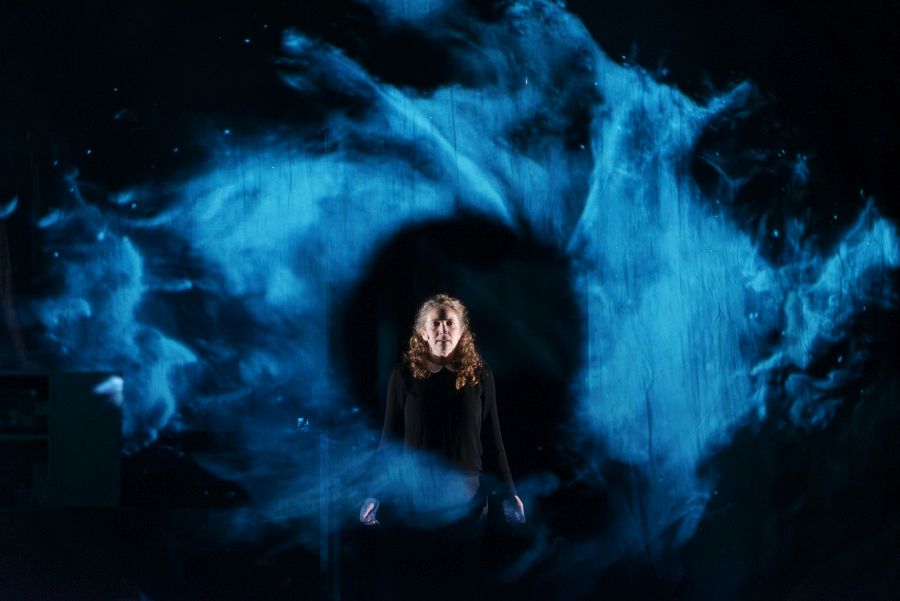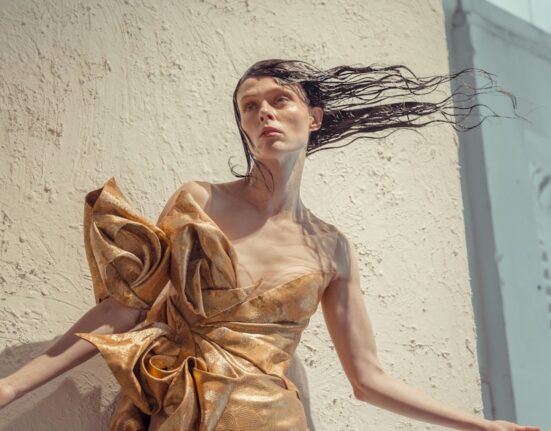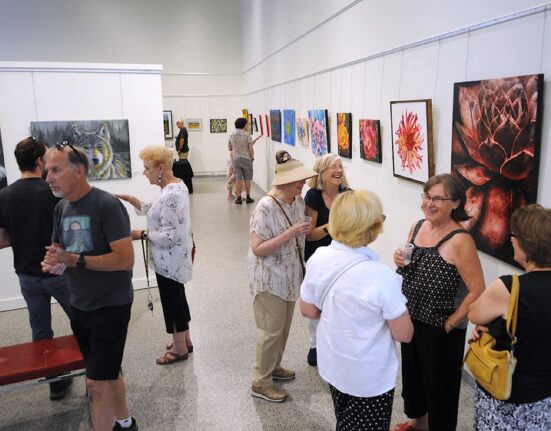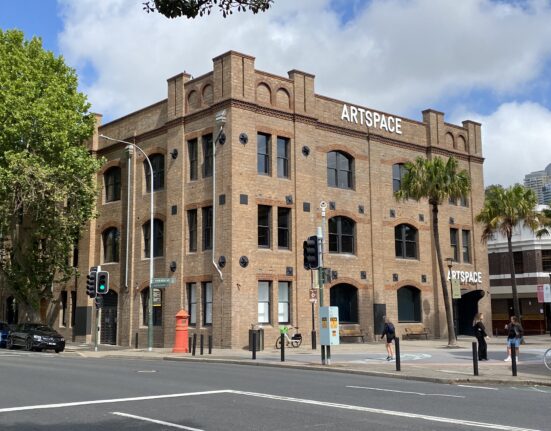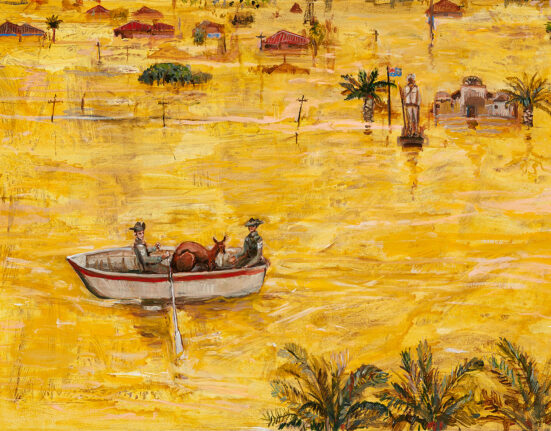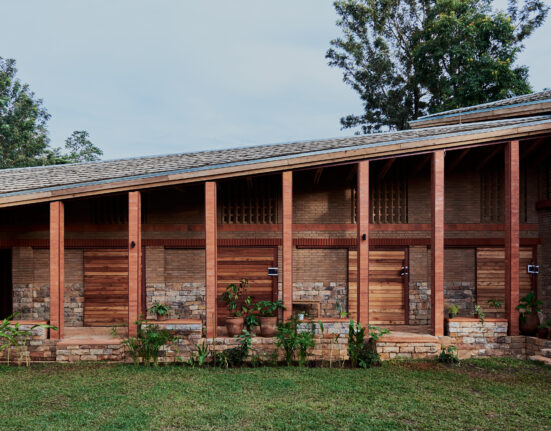An interdisciplinary performance work, At the End of the Land, devised by Perth/Boorloo-based artists Talya Rubin and Nick James, is an experience filled with overlaps, transitions and immersive pathways through liminal spaces.
As theatre makers, Rubin and James have worked together as the cross-disciplinary company Too Close to the Sun since 2009, and have an impressive archive of performances on record. Their previous works (such as Bluebird Mechanicals, 2017) are known for their clever combinations of visual art, lighting and sound in work that is stylistically distinct in its melding of these forces to create strong sensory impressions that offer conceptual questions for viewers to ponder.
Their latest work does not depart from this tradition, in that it too is a melange of surprising visual and aural forces that expands the mind and, at times, overwhelms the senses.
The piece’s main performer is (co-deviser) Rubin who guides us through many mysterious time warps and hazy, halfway spaces. As she emerges through the darkness wearing a glistening metallic spacesuit, it feels as if we are about to set off to places infinite and unknown.
In many ways, this in indeed where Rubin leads us throughout. As she speaks, her beautifully delivered script describes places where there are no thresholds and no limits to the energies and states of consciousness that exist beyond our known realities.
In some standout scenes, Matthew Erran’s lighting combines with Samuel James’ video design to take us to the dark depths of these places and states. Our vision is blurred and the lines between what is real and unreal turn to smoke. These moments have stunning power and transform the small theatre space into a limitless place filled with magical power.
Another highlight of this work (and in another characteristic feature of Rubin and James’ style) is their fascination with, and exploration of, artistic and conceptual contrast. As soon as the artists take us to heights of vastness and infinity, they just as quickly present us with the opposite – sometimes in the form of miniature dioramas, which remind us of how small we really are.
These contrasts are conceptually intriguing, but at times they make for an emotionally disjointed journey. The work also feels too drawn out and some motifs and characters reoccur in repetitive ways that add no depth to our engagement.
Yet there is one standout character whose presence never fails to draw our attention – the inimitable presence of a little red monkey with flashlight eyes who dies twice on a railroad with death-metal music playing in his ears. He is a completely baffling being, but his role is also darkly humorous and inescapably memorable.
Overall, At the End of the Land by Too Close to the Sun is, as its title suggests, a poetic exploration of what lies on the edges of things, as well as just beyond them. At times, there is sufficient distance between us and these bright lights to allow us to see what these places resemble. At other times, the artists and their accomplished team of collaborators deliberately draw us in too close to the sun, so we lose our ability to see clearly and enter a state where questions of what we think we know arise.
Read: Exhibition review: Studios: 2023, Adelaide Contemporary Experimental
It’s a work full of contrasts and contradictions and, if you are looking for a linear narrative, this is not a work for you. But if you are someone who likes art that leads to spooky, shape-shifting places (David Lynch fans especially), it’s well worth your time.
At the End of the Land
Too Close to the Sun
PICA Performance Space, WA
Original Concept, Performer, Writer, Co-Deviser: Talya Rubin
Co-Deviser, Director: Nick James
Video Designer: Samuel James
Sound Composer: Rachael Dease
Voice Alteration: Tim Collins
Sound Designer: Daniel Herten and Hayley Forward
Lighting Designer: Matthew Erren
Set Designer: Laura Heffernan and Talya Rubin
Costume Designer: Nicole Marrington
Red Monkey Maker: Tarryn Gill
Set Builder: Janet Carter
At the End of the Land will be performed until 2 December 2023.

